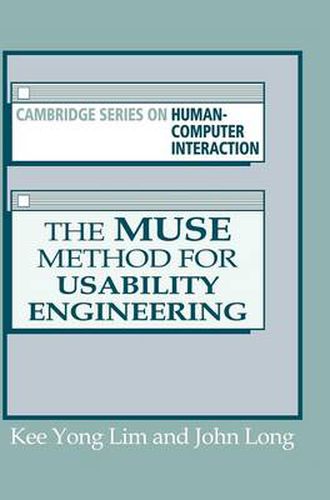Readings Newsletter
Become a Readings Member to make your shopping experience even easier.
Sign in or sign up for free!
You’re not far away from qualifying for FREE standard shipping within Australia
You’ve qualified for FREE standard shipping within Australia
The cart is loading…






To extend the scope of human factors contributions beyond late evaluation, and so increase their effectiveness and uptake, a frequent plea is for its inputs to be more explicit, early and continuous throughout the system development process. MUSE is a method developed specifically to meet these requirements of Usability Engineering. Since its scope spans user requirements to user interface design, it supports active human factors involvement in both design specification and evaluation. MUSE defines how, what and when particular human factors concerns should be addressed; and specifies the outputs, procedures, notations and documentation involved. Intersections with Software Engineering are identified to support inter-disciplinary project planning, co-ordination and communication (including the use of a common notation). As a structured human factors method, MUSE is arguably the most advanced and complete. This comprehensive book is a text for reference and teaching, and a training manual for method application. It is essential reading for all involved with interactive system development.
$9.00 standard shipping within Australia
FREE standard shipping within Australia for orders over $100.00
Express & International shipping calculated at checkout
To extend the scope of human factors contributions beyond late evaluation, and so increase their effectiveness and uptake, a frequent plea is for its inputs to be more explicit, early and continuous throughout the system development process. MUSE is a method developed specifically to meet these requirements of Usability Engineering. Since its scope spans user requirements to user interface design, it supports active human factors involvement in both design specification and evaluation. MUSE defines how, what and when particular human factors concerns should be addressed; and specifies the outputs, procedures, notations and documentation involved. Intersections with Software Engineering are identified to support inter-disciplinary project planning, co-ordination and communication (including the use of a common notation). As a structured human factors method, MUSE is arguably the most advanced and complete. This comprehensive book is a text for reference and teaching, and a training manual for method application. It is essential reading for all involved with interactive system development.